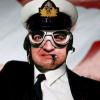
Sign in to follow this
Followers
0

Capturing the localizer - Concorde X
By
VeryBumpy, in MS FSX | FSX-SE Forum


By
VeryBumpy, in MS FSX | FSX-SE Forum